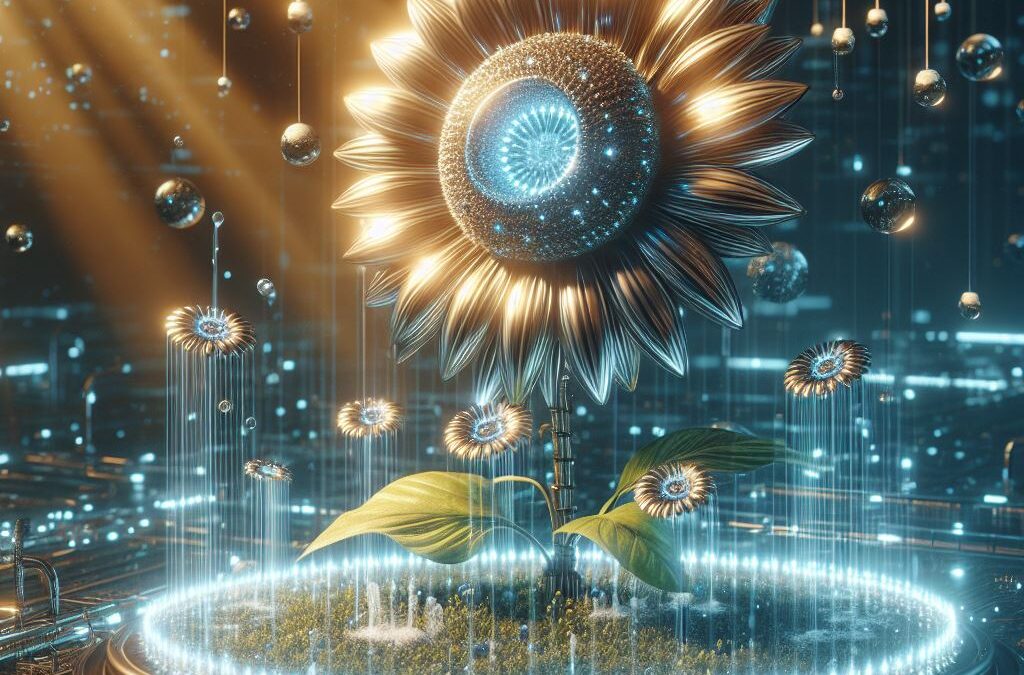Discover the fascinating world of artificial photosynthesis and how scientists are harnessing the sun’s power in innovative ways!
Topics
- Introduction to a Sunny Solution
- The Power of Plants: Understanding Photosynthesis
- Imitating Nature: How Artificial Photosynthesis Works
- Why Is Artificial Photosynthesis Important?
- Turning Sunlight into Fuel: The Future of Energy
- A Brighter Tomorrow
- Frequently Asked Questions (FAQs)
Introduction to a Sunny Solution
Have you ever heard of Artificial Photosynthesis? It’s like a magical process that scientists are working on to turn sunlight into clean and renewable energy. Just like how plants use sunlight to make their food and grow, artificial photosynthesis aims to do the same to help our planet.
Imagine if we could use the sun’s power to create energy without harming the environment. That’s the goal of artificial photosynthesis—to mimic how plants convert sunlight into energy, but in a way that can be used to power our homes and cars without producing harmful gases.
The Power of Plants: Understanding Photosynthesis
Plants are like nature’s little energy factories, using a process called photosynthesis to turn sunlight into food. Just like how we need to eat to grow and stay healthy, plants also need sunlight, water, and carbon dioxide to make their food.
The Magic Behind the Green
So, how does this magic process work? Plants have special parts called chloroplasts in their leaves that act like tiny solar panels. These chloroplasts soak up sunlight and use it to change water from the ground and carbon dioxide from the air into glucose, a type of sugar plants use as food. As a result, plants release oxygen into the air, which is great for us because we need oxygen to breathe!

Imitating Nature: How Artificial Photosynthesis Works
In the exciting world of science, researchers are looking at plants for inspiration on how to create a cleaner and more sustainable future. Just like how plants use sunlight to make their own food through photosynthesis, scientists are developing a process called artificial photosynthesis to generate clean energy and reduce carbon dioxide in the air.
The Ingredients for a Cleaner Future
For artificial photosynthesis to work, scientists need a few key ingredients:
- They require sunlight, which is the main energy source for this process.
- Like plants, they need water to help split into hydrogen and oxygen.
- A particular machine is used to combine all these components to create a clean energy source while reducing carbon dioxide emissions into the atmosphere.
Why Is Artificial Photosynthesis Important?
Artificial photosynthesis is essential because it helps us create renewable energy, which means we can make power without harming the Earth. By using sunlight to generate energy, we can keep our planet clean and healthy for a long time.
Keeping the Earth Happy and Healthy
When we use artificial photosynthesis to produce clean energy, we don’t release harmful gases into the air, like when burning oil or coal. This means there is less pollution, which is good for the environment and all living things on Earth. Reducing the amount of carbon dioxide in the air can help slow down climate change and protect our planet.
Turning Sunlight into Fuel: The Future of Energy
Someday, we can use sunlight to power everything around us. Imagine cars running on sunshine and homes getting electricity from the sun’s rays. This could happen if scientists figure out how to turn sunlight into fuel.
A World Powered by the Sun
Picture a world where we no longer need to burn fossil fuels like oil or coal. Instead, we would rely on the sun to provide clean and endless energy. This would mean less pollution in the air and a healthier planet for everyone.
By harnessing the power of sunlight, we could reduce our carbon footprint and help protect the Earth. Trees would be happier, animals would thrive, and our environment would be in better shape. So, if we can turn sunlight into fuel, the future of energy looks bright indeed.
Final Thoughts: A Brighter Tomorrow
Artificial photosynthesis has the potential to revolutionize the way we generate energy and take care of our planet. By harnessing the power of sunlight and mimicking the process of photosynthesis seen in plants, we can create a cleaner and more sustainable energy source for the future.
Imagine a world where our cars run on sunshine and our homes are powered by the sun. This is the kind of future that artificial photosynthesis could bring us. By utilizing renewable energy sources like sunlight, we can reduce our dependence on fossil fuels and decrease harmful emissions contributing to climate change.
Not only does artificial photosynthesis offer a cleaner alternative to traditional energy sources, but it also helps to combat the rising levels of carbon dioxide in our atmosphere. By capturing and converting CO2 into usable energy, we can work towards a healthier planet for future generations.
As we look ahead to the possibilities that artificial photosynthesis presents, it’s clear that this innovative technology has the potential to create a brighter tomorrow for all. By embracing clean energy solutions like artificial photosynthesis, we can pave the way for a more sustainable and environmentally conscious future.
Frequently Asked Questions (FAQs)
Can artificial photosynthesis work at night?
No, because it needs sunlight to work, just like real plants.
Is this kind of energy being used right now?
It’s still being tested, but it’ll be in many places one day!





